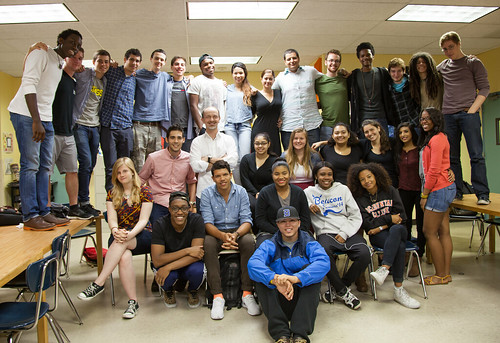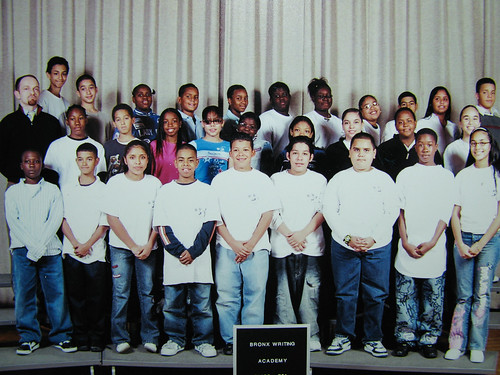The terrifying nature of freedom causes individuals to assimilate into society to shirk their responsibilities. Societies thus take advantage of this by oppressing individuals to maintain stability. 1984, by George Orwell, and Invitation to a Beheading, by Vladimir Nabokov, both exhibit oppressive environments and individuals who accept these societies. The protagonists believe in the ideals and opinions perpetuated by their respective powers, and choose to subject themselves to the oppression put forth by those in control. Jean-Paul Sartre’s essay, “Existentialism is a Humanism”, discusses the freedom and responsibility inherent to humanity. In Orwell and Nabokov’s works, the protagonists, faced with the burden of decision and consequent responsibility, choose to suppress their freedom. Out of fear, not of oppressive forces but of self-dependence, they turn to another to control their lives. Thus they ultimately engage in deceiving themselves and choose lives of bad faith, where they are dishonest with themselves and refuse to embrace despair and anguish. They suppress their individuality to ignore the responsibility inherent to freedom. Both 1984 and Invitation to a Beheading exhibit the intrinsically oppressive nature of society and show that, through an existentialist lens, structured society is unnatural and accepting it is ultimately a form of self-deception as it suppresses an individual’s freedom. [Read more…]
Reading Lolita in Tehran Essay by J.H.
The Liberating Power of Fiction
In Azar Nafisi’s Reading Lolita in Tehran, Nafisi accomplishes, in a non fiction book, what she explains only fiction can do: make the reader feel empathy towards the characters. As the reader gets to know the characters, sympathizing with them and eventually empathizing with them, it is hard to decide where to put the blame for all the women’s problems. Nafisi makes it clear to the reader that many of the women’s issues are directly and indirectly caused by the Islamic Republic of Iran. When Nafisi confronts her magician with this mentality, he argues that she can not blame everything on the regime and she must forget about the politics and read literature. It is almost impossible for the reader to agree with the magician as we see the harsh rules of Sharia law and how they affect Nafisi and her girls. As the book continues and the women develop further, it is obvious that while the women read their literature, it is important for them to address the politics around them-influential factors in their life-in order to fully gain the epiphanies of truths Nafisi describes. As Nafisi exposes these women to literature, she is also allowing them to grasp the world around them-filled with such hatred for women and find themselves. Azar Nafisi’s Reading Lolita in Tehran exposes an Islamic Republic of Iran where women fall victim to a Sharia that not only sexually suppresses them physically and mentally, but also further dehumanizes them, denying them the basic elements of life. Simultaneously, these women are exposed to Western literature by Nafisi, leading them to take control of their own identities.
Read more:
Between the World and Me and Godot Comparative Essay by YP
Between The World and Me and Waiting For Godot: How Escaping Absurdities Obstructs Authenticity
Ta-Nehisi Coates’s Between the World and Me focuses on racism, while Samuel Beckett’s Waiting For Godot, the experience of two men waiting to be saved, yet both texts convey the absurdity of the human condition and mankind’s impulse to find meaning in life. Despite the different illustrations of the difficulty of life, both authors indicate that relationships with love are the most valuable thing humankind can achieve. Coates and Beckett demonstrate how religion and worship are forms of self-deception which people use to escape life’s absurdities, when in reality love should be used in order to embrace them, thus allowing an authentic life.
Read more:
No Exit and Waiting for Godot Outline by G.K.
No Exit and Waiting for Godot Outline
I. In both texts the authors’ ironic use of hell reveals the unreliability and uncertainty in the characters, suggesting that man has been conditioned to turn to others not only to confirm but to dictate his existence, resulting in a cycle of inauthenticity.
II. Sarte uses Estelle’s dependency on mirrors to reaffirm her existence to highlight how man often looks at himself through the eyes of others, even when looking at his own reflection, because he feels the need to appeal to the dictators of his life.
A. “When I talked to people I always made sure there was [a mirror] nearby in which I could see myself. I watched myself talking. And somehow it kept me alert, seeing myself as others saw me…” (Sarte 19).
Read more:
Ivan Ilyich and Siddhartha Comparative Essay by SH
Siddhartha and The Death of Ivan Ilych : Existence through Nonexistence
According to Martin Heidegger, a renowned German philosopher, there are two soul sicknesses of mankind: one is unaware of his existence, and one falls into ‘theyself’ living mostly according to what ‘they’ tell him to do, thus leading an inauthentic life. A life in which one runs away from the confrontation with nonexistence, and becomes egoistic, treating all other life as a means rather than an end. Therefore, only a confrontation with death allows one to exist authentically. An existence in which one sees the unity of all life thus overcoming alienation and egoism, making the most of the limited time in one’s life. In Hermann Hesse’s Siddhartha and Leo Tolstoy’s The Death of Ivan Ilyich , both authors portray protagonists who lead lives filled with inauthenticity, living in a state of ‘theyself’, until confronted with death. Through Siddhartha’s desired suicide and Ivan Ilyich’s untimely fatal illness, both Hesse and Tolstoy suggest that one’s confrontation with death makes him realize the inauthenticities of his life, and thus enables one to live authentically.
Read More:















































